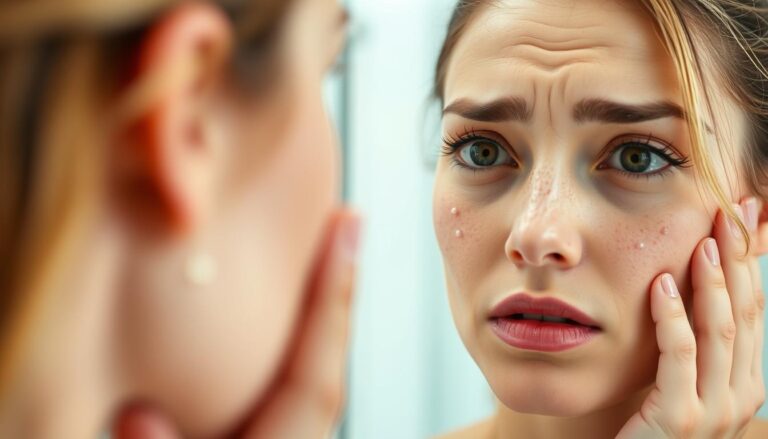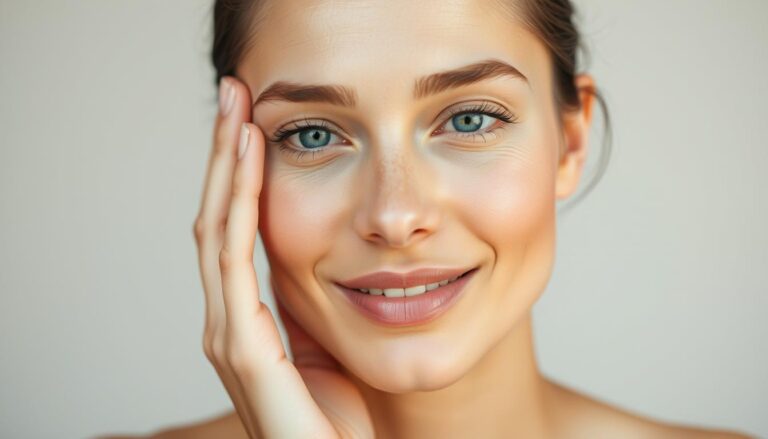At Glowskinhub.com, we believe beauty isn’t just a look—it’s a feeling
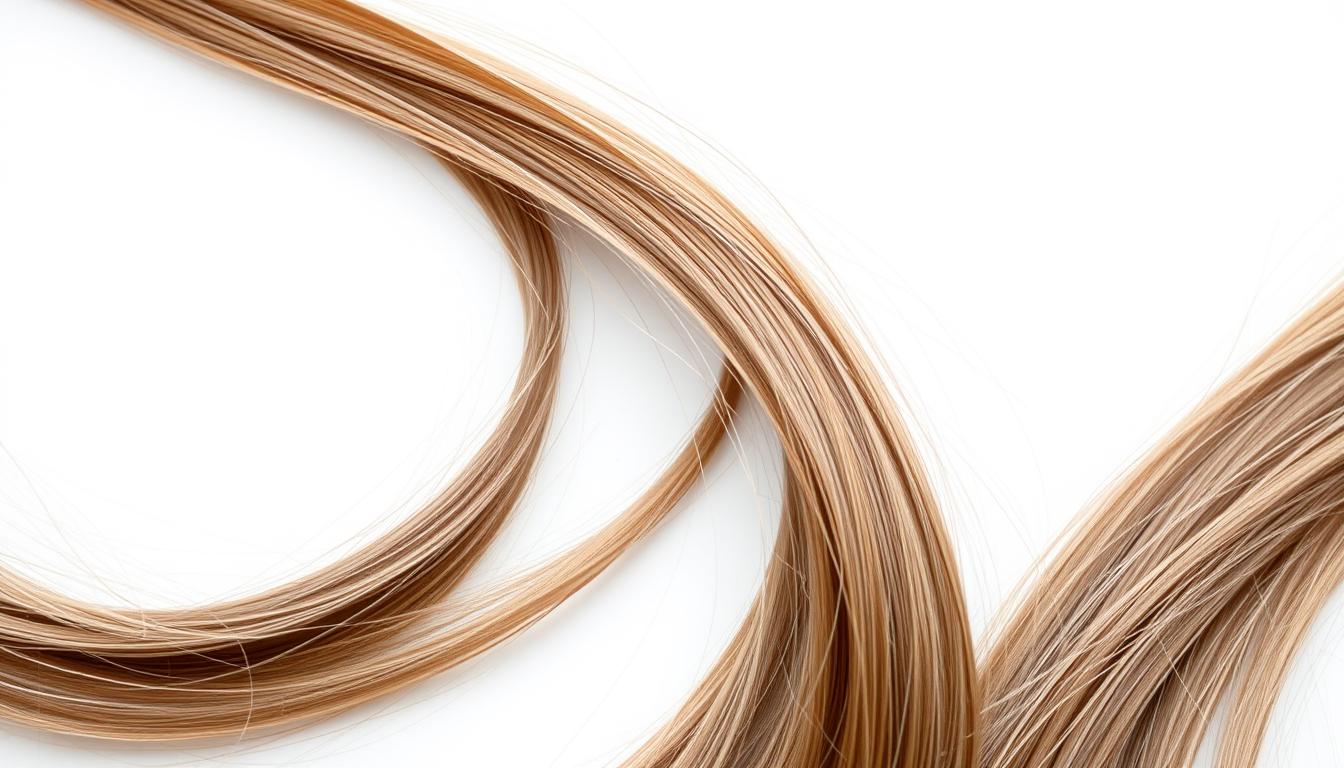
Tips for Growing Longer Hair Fast Without Supplements
Growing longer hair quickly can be a challenge, but it’s achievable with the right approach. A well-nourished scalp and a consistent hair growth routine are crucial. While many turn to supplements, there are effective methods to promote hair growth without them.
Maintaining a healthy scalp is vital, especially for those with an oily Skin routine. Balancing scalp care with the right Hair Care products can stimulate hair growth. By understanding the importance of hair growth and adopting a few simple practices, you can achieve the long, luscious locks you desire.
Key Takeaways
- Maintain a healthy scalp to promote hair growth.
- Use a consistent Hair Care routine.
- Balance your oily Skin routine with scalp care.
- Avoid harsh chemical treatments.
- Use gentle, nourishing hair products.
Understanding Hair Growth: The Science Behind It
Understanding the intricacies of hair growth is crucial for anyone looking to achieve longer, healthier locks. Hair growth is a complex biological process that involves the coordination of multiple factors.
The Hair Growth Cycle Explained
The hair growth cycle consists of three distinct phases: Anagen, Catagen, and Telogen. Each phase plays a vital role in determining the length and health of your hair.
Anagen, Catagen, and Telogen Phases
The Anagen phase, also known as the growth phase, can last anywhere from 2-6 years, during which the hair grows actively. The Catagen phase is a short transitional period lasting about 2-3 weeks, where the hair follicle shrinks and detaches from the dermal papilla. The Telogen phase, or resting phase, lasts about 3-4 months, after which the hair is released and falls out.

On average, hair grows about 1.25 cm (0.5 inches) per month, or around 15 cm (6 inches) per year. However, this rate can vary significantly from person to person due to factors such as genetics and overall health.
Factors That Affect Hair Growth Rate
Several factors can influence your hair’s growth rate, including genetics, age, and certain health conditions.
Genetics and Age Considerations
Genetics play a significant role in determining your hair’s growth rate and maximum length. As we age, our hair growth rate can slow down due to the natural aging process. For instance, older individuals may experience a shorter Anagen phase, resulting in slower hair growth.
Health Conditions That Impact Growth
Certain health conditions, such as thyroid disorders, autoimmune diseases, and nutritional deficiencies, can significantly impact hair growth. For example, hypothyroidism can lead to hair loss and slow down hair growth.
| Factor | Impact on Hair Growth | Potential Solutions |
|---|---|---|
| Genetics | Determines growth rate and max length | Acceptance and tailored Hair Care |
| Age | Slows down growth rate | Adjust Hair Care routine accordingly |
| Health Conditions | Can cause hair loss or slow growth | Medical treatment and nutritional adjustments |
Proper Hair Care Routine for Maximum Growth
Maximising hair growth requires a comprehensive approach to Hair Care that addresses various factors. A well-structured Hair Care routine not only promotes healthy hair growth but also prevents damage and breakage.
Gentle Washing Techniques That Preserve Length
Gentle washing is crucial for preserving hair length. When washing your hair, it’s essential to be gentle to minimise breakage. Massaging your scalp gently rather than scrubbing vigorously can help reduce damage. Using lukewarm water instead of hot water can also help preserve the hair’s natural moisture.
Selecting the Right Shampoo and Conditioner
Choosing the right shampoo and conditioner is vital for hair growth. For individuals with oily Skin, using products labelled as “suitable for oily Skin” or “oil-control” can be beneficial. When selecting a shampoo, look for ingredients that nourish the hair without stripping it of its natural oils. A conditioner that moisturises and protects the hair ends is equally important.
Optimal Hair Washing Frequency for Growth
The frequency of washing hair depends on several factors, including hair type and lifestyle. Over-washing can strip the hair of its natural oils, leading to dryness and breakage. For most hair types, washing 2-3 times a week is optimal. However, this can vary based on individual factors such as activity level and climate.
| Hair Care Routine | Frequency | Impact on Hair Growth |
|---|---|---|
| Gentle washing with suitable products | 2-3 times a week | Promotes healthy growth, reduces breakage |
| Using harsh products | Daily | Strips natural oils, leads to breakage |
| Minimal washing with nourishing products | Once a week | Retains moisture, supports growth |
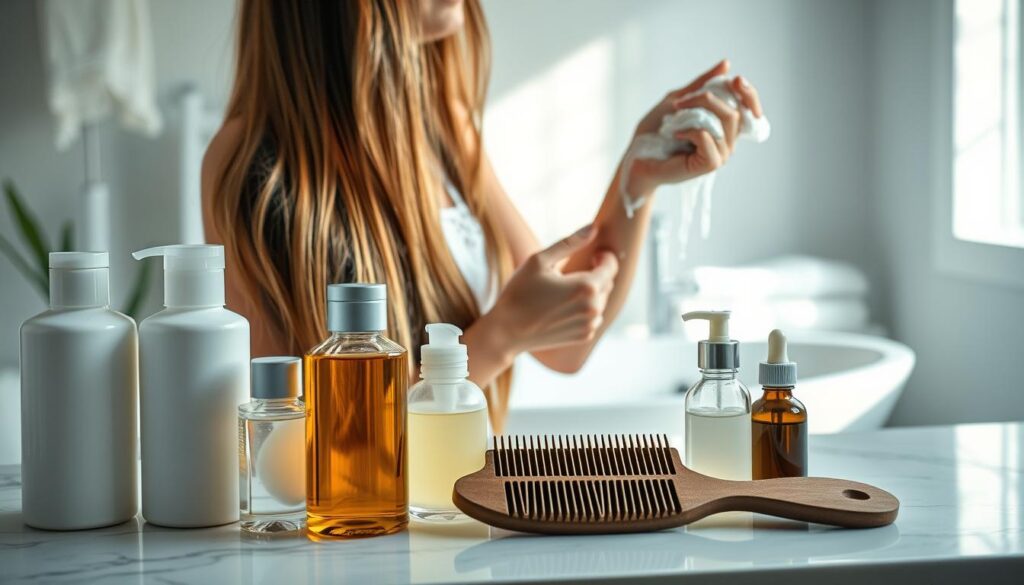
By adopting a gentle and appropriate Hair Care routine, individuals can promote healthier and faster hair growth.
Nutrition and Diet: Fueling Hair Growth from Within
Nutrition plays a pivotal role in determining the rate and strength of hair growth. A diet lacking essential nutrients can lead to hair loss, slow growth, and brittle hair. Therefore, understanding the nutritional requirements for healthy hair is crucial.
Essential Nutrients That Promote Faster Growth
A diet rich in specific nutrients can significantly enhance hair growth. These nutrients work by providing the necessary building blocks for hair follicles, promoting a healthy scalp, and supporting the overall growth cycle.
Protein-Rich Foods for Stronger Hair
Protein is a fundamental component of hair, making protein-rich foods essential for hair growth. Foods like salmon, eggs, and Greek yoghurt are excellent sources of protein.
Including a variety of protein-rich foods in your diet can help strengthen hair follicles, reducing the risk of breakage and promoting longer, healthier hair.
Vitamins and Minerals That Support Growth
Certain vitamins and minerals are particularly beneficial for hair growth. These include:
- Vitamin C: Essential for the production of collagen, which helps give structure to hair.
- Biotin: Plays a crucial role in hair growth by converting protein into energy.
- Zinc: Supports hair growth by repairing and maintaining hair follicles.
A well-balanced diet that includes foods rich in these vitamins and minerals can support hair health and promote growth.
“A healthy outside starts from the inside.” – Robert Urich
| Nutrient | Benefit for Hair | Food Sources |
|---|---|---|
| Protein | Strengthens hair follicles | Salmon, Eggs, Greek Yoghurt |
| Vitamin C | Promotes collagen production | Oranges, Strawberries, Kiwi |
| Biotin | Converts protein into energy | Nuts, Eggs, Whole Grains |
Hydration and Its Direct Impact on Hair Length
Adequate hydration is vital for maintaining healthy hair. Water helps keep the hair shaft healthy and strong, reducing the risk of breakage.
Drinking enough water is essential for overall health, including the health of your hair. Dehydration can lead to dry, brittle hair that is prone to breaking.

Scalp Care: The Foundation of Healthy Hair Growth
The foundation of a luscious mane lies in the health of your scalp, making scalp care a crucial aspect of your Hair Care routine. A well-maintained scalp provides the ideal environment for hair to grow strong and healthy.
Effective Scalp Massage Techniques
Scalp massage is a simple yet effective way to stimulate hair growth. By massaging your scalp, you increase blood flow, which helps to nourish your hair follicles.
Benefits of Scalp Massage:
- Stimulates hair growth by increasing blood flow
- Reduces stress, which can contribute to hair loss
- Helps to remove dead Skin cells, promoting a healthy scalp
Tools and Methods for Proper Stimulation
Various tools and techniques can be used to massage your scalp effectively. Using your fingertips to massage in circular motions is a simple and effective method.
Other Tools Include:
- Scalp massagers
- Soft-bristled brushes
- Even your fingertips
How Often to Massage Your Scalp
For optimal results, it’s recommended to massage your scalp 2-3 times a week. Consistency is key to stimulating hair growth and maintaining scalp health.
Exfoliation Methods for a Clean, Healthy Scalp
Exfoliating your scalp is crucial for removing dead Skin cells and other debris that can clog hair follicles. This can be done using gentle exfoliating scrubs or scalp brushes.
| Exfoliation Method | Frequency | Benefits |
|---|---|---|
| Gentle Scalp Scrubs | Once a week | Removes dead Skin cells, promotes healthy scalp |
| Scalp Brushes | 2-3 times a week | Stimulates blood flow, removes debris |
Natural Oils That Nourish the Scalp
Certain natural oils are beneficial for scalp health, providing nourishment and hydration. Some of the most effective oils include coconut oil, olive oil, and jojoba oil.
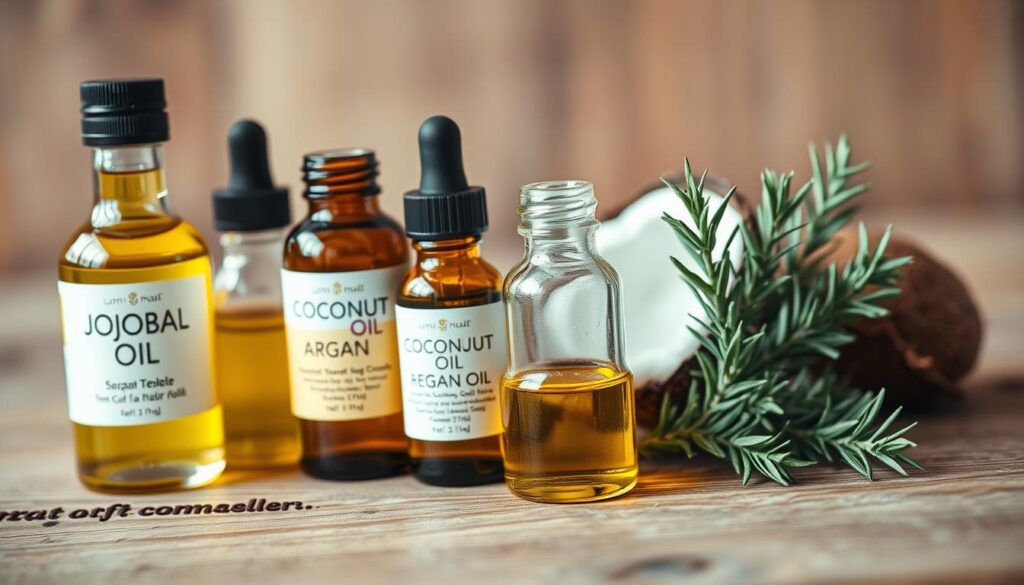
These oils can help to moisturize the scalp, reduce dandruff, and promote a healthy environment for hair growth.
Tips for Growing Longer Hair Fast Without Supplements
Achieving longer hair doesn’t have to involve supplements; simple changes to your Hair Care routine can make a significant difference. By understanding and implementing a few key strategies, you can promote hair growth and achieve the long, healthy locks you desire.
The Truth About Trimming and Hair Growth
One common debate in the realm of hair growth is whether trimming your hair regularly can actually help it grow faster. The answer lies in understanding that while trimming doesn’t directly affect the rate of hair growth, it does prevent split ends and breakage, which can make your hair appear longer and healthier over time.
Regular trims can be beneficial as they:
- Prevent split ends from traveling up the hair shaft
- Reduce breakage, making hair appear fuller and healthier
- Enhance the overall appearance of your hair, making it look more vibrant and manageable
Protective Hairstyles That Prevent Breakage
Protective hairstyles are an excellent way to minimize hair manipulation and reduce breakage, thereby aiding in the quest for longer hair. These styles can be particularly beneficial for individuals with fragile or damaged hair.
Daytime Protective Styles
For daytime, consider styles that are not only protective but also stylish. Some popular options include:
- Buns and chignons that keep your hair tucked away and secure
- Braids, such as French braids or box braids, which can be worn in various styles
- Twists, which can be worn as is or further styled into more complex designs
Nighttime Hair Protection Methods
Protecting your hair at night is just as important as during the day. Techniques include:
- Using a satin or silk pillowcase to reduce friction
- Wrapping your hair in a scarf or bonnet to prevent tangling and breakage
- Opting for a loose braid or ponytail to minimize overnight hair manipulation

Overnight Hair Care Routines for Length Retention
An effective overnight Hair Care routine can significantly contribute to length retention. This includes:
- Applying a nourishing hair mask or deep conditioning treatment to lock in moisture
- Using a leave-in conditioner or hair Serum to protect your hair from damage
- Gently detangling your hair before bed to prevent knots and tangles
By incorporating these tips into your Hair Care regimen, you can promote healthier, longer hair without relying on supplements. It’s all about adopting a consistent and nurturing approach to your hair’s health.
Heat Styling and Hair Growth: Finding the Balance
Heat styling is a double-edged sword when it comes to hair growth – it can be both a styling savior and a growth hindrance. While it offers versatility and convenience in achieving various hairstyles, excessive heat can damage hair and impede its growth.
Minimising Heat Damage Whilst Styling
To mitigate the adverse effects of heat styling, it’s crucial to adopt practices that minimize damage. This includes using the right products and techniques that protect hair from heat.
Heat Protectant Products That Actually Work
Using a heat protectant product is essential when heat styling. These products create a barrier between your hair and the heat tool, reducing damage. Look for products containing silicones like dimethicone or cyclomethicone, which are known for their protective qualities.
Some effective heat protectant products include sprays and serums from brands like Bumble and bumble and TRESemmé. Always follow the product instructions for the best results.
Proper Heat Tool Usage Techniques
The way you use heat tools can significantly impact the health of your hair. Always use the lowest temperature necessary to achieve your desired style. For instance, temperatures above 200°C can cause significant damage, so it’s advisable to keep your styling tool below this threshold whenever possible.
Additionally, avoid clamping the heat tool too tightly on your hair, as this can cause breakage. Instead, use smooth, gliding motions to style your hair.

Stylish Heat-Free Hairstyling Alternatives
For those looking to minimize heat damage, there are numerous heat-free hairstyles that are both stylish and easy to achieve. Techniques such as braiding, twisting, and bun-making can result in beautiful, damage-free hairstyles.
Experimenting with different heat-free styles not only promotes hair health but also adds variety to your styling routine. Consider incorporating styles that work well with your hair type, whether it’s curly, straight, or wavy.
Common Hair Growth Myths Debunked
Hair growth myths abound, but it’s time to separate fact from fiction. For those seeking to grow their hair longer, understanding the truth behind these myths is crucial.
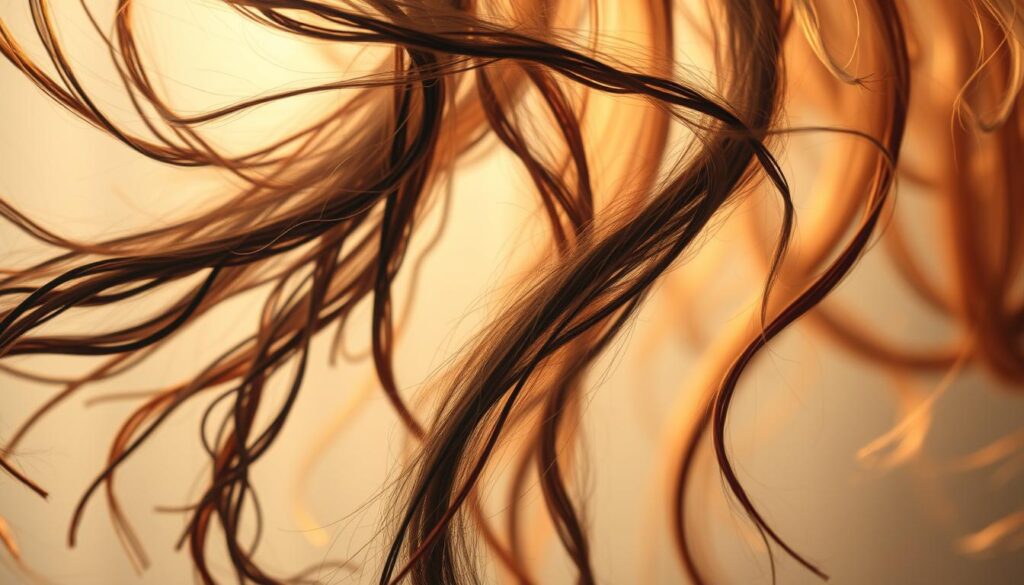
Popular Misconceptions About Growing Hair Longer
Many people believe that cutting your hair frequently makes it grow faster. However, hair growth rate is determined by the scalp, not the ends. Trimming can help prevent split ends and breakage, but it doesn’t directly affect the rate of growth.
Another common myth is that certain products can drastically improve hair growth overnight. While some products may nourish and strengthen hair, overnight miracles are rare. Consistent, long-term care is what’s truly effective.
Science-Backed Facts vs. Traditional Beliefs
Contrary to traditional beliefs, brushing your hair 100 strokes a day does not stimulate hair growth. In fact, excessive brushing can lead to breakage and damage. Science suggests that gentle handling and minimizing mechanical stress are more beneficial.
A balanced diet rich in vitamins and minerals is often cited as a factor in hair growth. Science backs this up, showing that nutrients like biotin, vitamin D, and omega-3 fatty acids play a significant role in maintaining healthy hair follicles.
To grow longer hair, it’s essential to focus on science-backed strategies and avoid falling prey to common myths. By understanding what truly works, you can tailor your Hair Care routine for maximum effectiveness.
Lifestyle Changes That Promote Faster Hair Growth
Your daily habits and routines can either hinder or help your hair growth journey. While genetics play a role in determining hair growth rate, certain lifestyle adjustments can significantly enhance the health and length of your hair.
Stress Management Techniques for Healthier Hair
High stress levels have been linked to hair loss and slowed growth. Engaging in stress-reducing activities can promote a healthier scalp and encourage hair growth. Techniques such as meditation and yoga not only alleviate stress but also improve overall well-being.
- Meditation: Regular practice can reduce cortisol levels, thereby promoting hair growth.
- Yoga: Combines physical movement with deep breathing techniques, reducing stress.
- Deep Breathing Exercises: Simple yet effective in managing stress levels.
How Sleep Quality Affects Your Hair’s Growth Rate
Adequate sleep is crucial for overall health, including hair health. During sleep, your body repairs and regenerates tissues, including hair follicles. Poor sleep quality can lead to increased stress hormones, which negatively impact hair growth.
To improve sleep quality, consider the following:
- Establish a consistent sleep schedule.
- Create a relaxing bedtime routine.
- Avoid caffeine and electronics before bedtime.
Exercise Routines That Benefit Hair Health
Regular exercise can improve blood circulation, including to the scalp, thereby promoting healthier hair growth. Activities that boost cardiovascular health are particularly beneficial.
Some effective exercise routines include:
- Cardio exercises such as running or cycling.
- Strength training to improve overall health.
- Low-impact activities like walking or swimming.
By incorporating these lifestyle changes, individuals can create a conducive environment for hair growth, ultimately achieving longer, healthier hair.
Conclusion: Your Journey to Longer, Healthier Hair
Embarking on a hair growth journey requires patience, dedication, and a comprehensive approach. By understanding the science behind hair growth and adopting a holistic routine, you can achieve the long, luscious locks you’ve always desired.
Adopting gentle Hair Care practices, nourishing your scalp, and maintaining a balanced diet are crucial steps towards promoting healthier hair. Minimising heat damage and managing stress also play significant roles in your hair’s overall health.
As you start your hair growth journey, remember that everyone’s hair is unique, and results may vary. Be gentle with your hair, and don’t be discouraged by setbacks. With persistence and the right techniques, you can enjoy longer, healthier hair that looks and feels its best.
Using the right products, such as those suitable for oily Skin, can also support your Hair Care routine. By combining these elements, you’ll be well on your way to achieving the hair you want.


